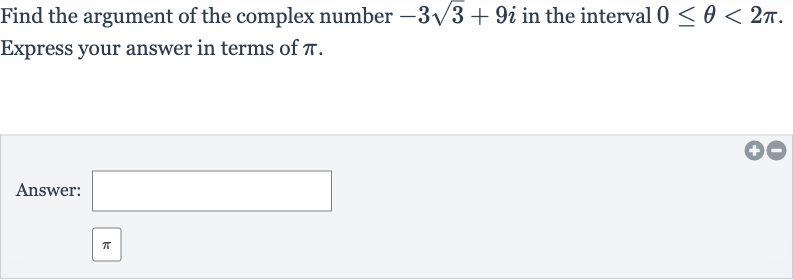Full solution
Q. Find the argument of the complex number in the interval . Express your answer in terms of .Answer:
- Identify parts of complex number: To find the argument of a complex number in the form , where is the real part and is the imaginary part, we use the formula . However, since the function only gives values from to , we need to consider the quadrant in which the complex number lies to find the correct argument in the interval 0 \leq \theta < 2\pi.
- Calculate principal value of argument: First, identify the real part and the imaginary part of the complex number . Here, and .
- Consider quadrant for correct argument: Next, calculate the to find the principal value of the argument. However, since is negative and is positive, the complex number lies in the second quadrant. In the second quadrant, the argument is .
- Compute absolute value of : Compute the absolute value of : .
- Calculate : Now, calculate . Since is known to be , will also be .
- Determine argument in second quadrant: Since the complex number is in the second quadrant, the argument is , which simplifies to .
- Find argument in interval to : Add and to find the argument of the complex number in the interval 0 \leq \theta < 2\pi: .

